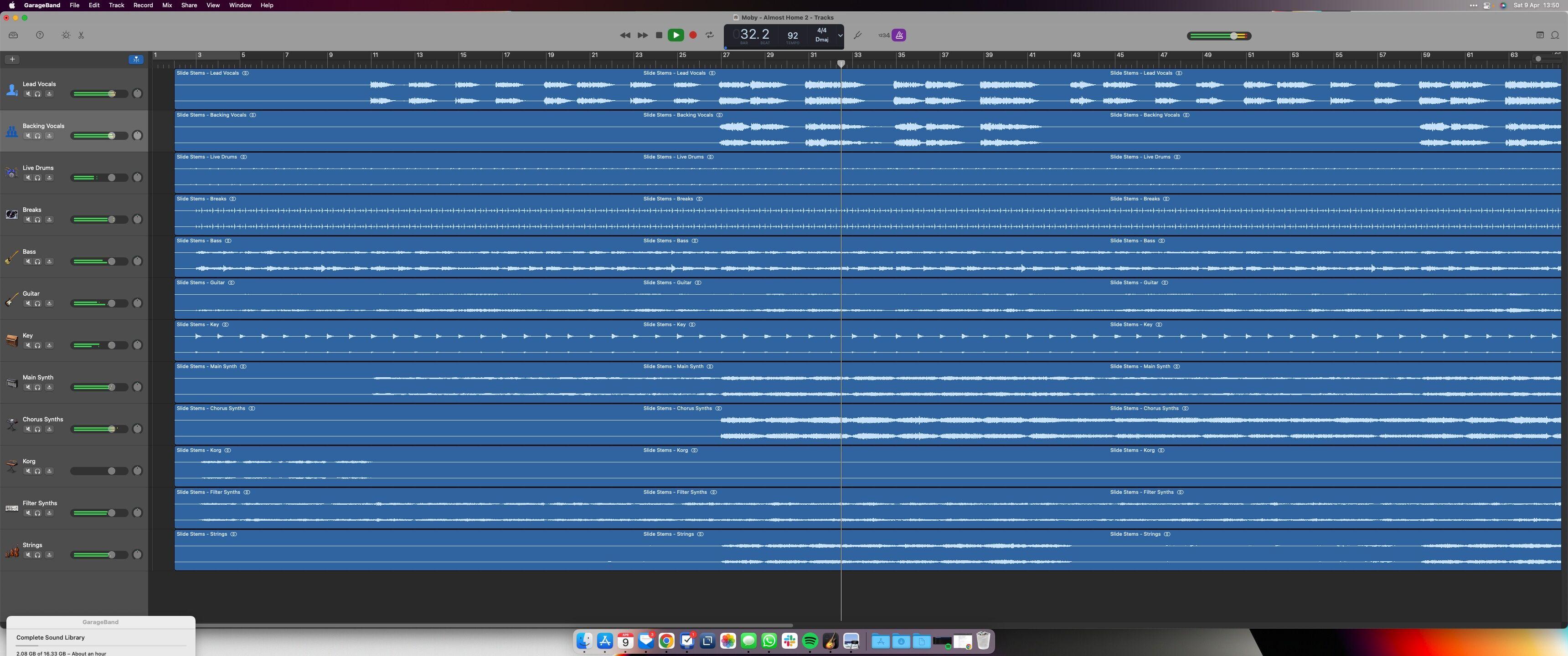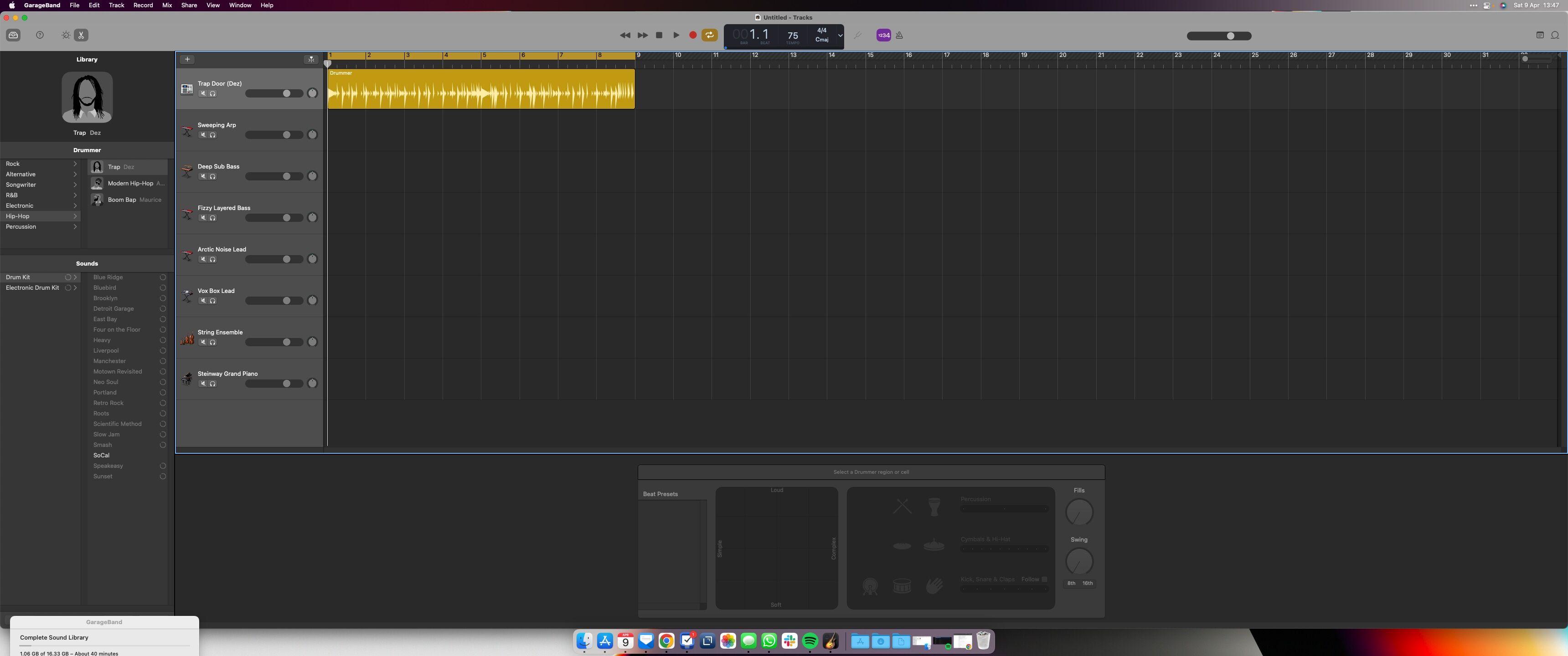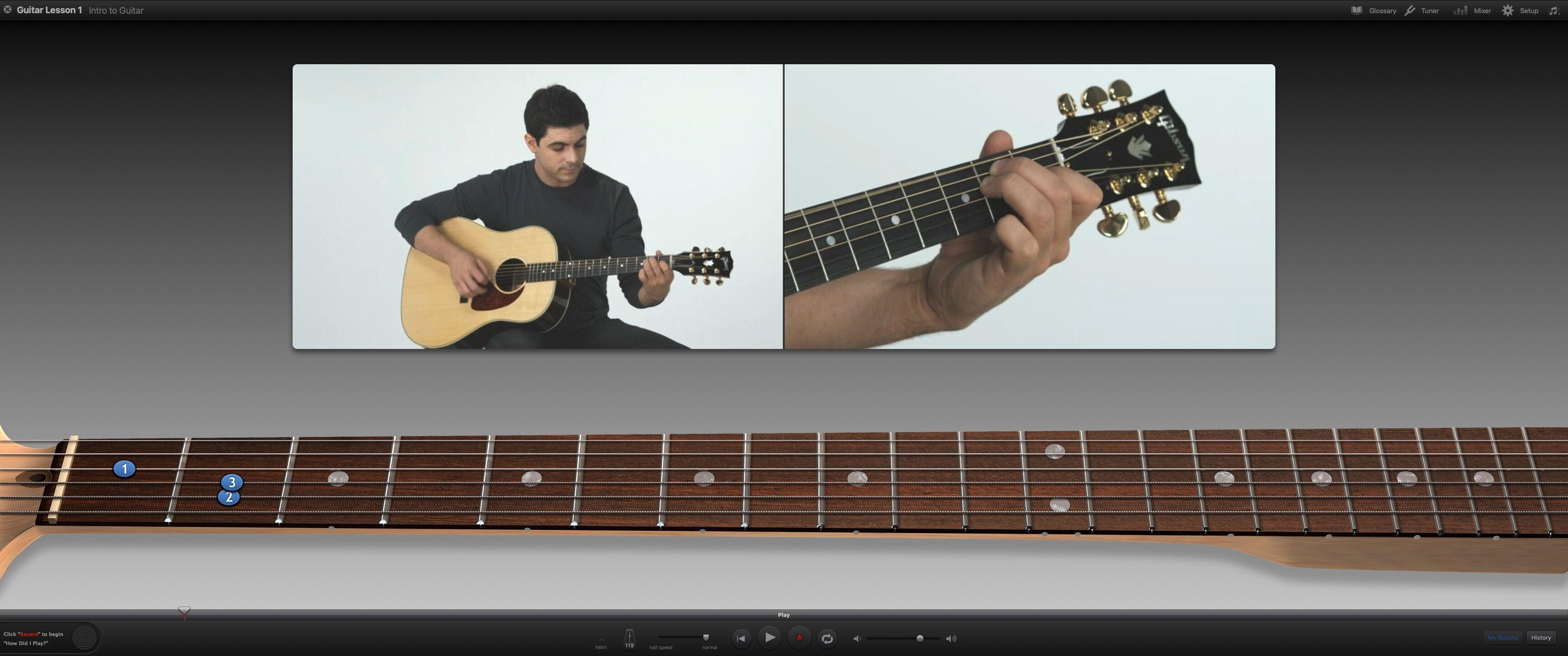GarageBand for Mac 10.4.6 Review
Apple’s relationship with music and its creation has gotten stronger in recent years, with Apple Music’s development, a variety of AirPod models, and plenty more. While Logic Pro has been around for years, though, offering a high-quality pro-level environment for audio recorders and enthusiasts, GarageBand has steadily grown in stature.
Found on every new Mac, GarageBand’s low barrier to entry may suggest it lacks the power to match your creative ambition but don’t be fooled – it’s a fully capable software suite that’s ideal for up and coming artists and podcasters, as well as those new to music creation or production.


We tested GarageBand version 10.4.6 on the latest M1 Pro MacBook Pro 16-inch, and it’s worth noting that the app does take advantage of the Apple Silicon architecture – and has done since version 10.4.1.
While there are no specific Apple Silicon features (we’ve also tested it on an Intel-based 16-inch MacBook from 2019), it’s worth mentioning that it does feel smoother and export times are likely to be shorter on newer hardware. You’re also likely to be able to do more recording and editing while away from a wall plug, thanks to the M1 chip’s improved power efficiency.
If you’ve not used GarageBand for a while you’ll be pleased to know those bizarre “wood-paneled” instrument icons are really the only holdover from Apple’s skeuomorphic fascination, and at first glance, GarageBand looks, well, a lot like any other DAW (digital audio workstation). It’s clean, with a lengthy workspace and plenty of tools buried within.
You can rack up 256 tracks within a single project, and depending on your setup you may need additional hardware to record your own instruments. We used a combination of a Focusrite Scarlett 2i2 connected via a Thunderbolt dock, a Blue Yeti X mic, and even the laptop’s own microphone array.
All hardware is configured when you first load a project, and if you come back to something after you’ve unplugged, say, your output speakers, GarageBand will default to the built-in options.
Tracks are displayed with their own waveforms, just as they are in something like Logic, and it’s quick and easy to drag things around to ensure they sync up where you want. The timeline itself can be zoomed in or out to find those errant notes or pick-scrapes, too, and chopping and changing segments is as simple as putting the playhead where you want to split things and then adding and removing as you see fit.
At the start of each track, you can adjust volume on a per-instrument basis, as well as pan between stereo outputs, while muting or using solo to focus on any one track.
Double-clicking recorded elements will bring it up in the Smart Editor at the bottom of the screen, meaning you can add effects, EQ, transpose, and plenty more. You’ll find a metronome and count-in option at the top, as well as a display that tracks tempo and key.
These are all relatively basic elements, but they’re presented in such a way that’s easily accessible by any relative newcomers. GarageBand has become the kind of app where a relative newcomer can dump a whole host of audio files into it and have fun just moving bits and pieces around.
Drums in particular are a joy to build out, with AI-powered percussionists that can be customised on a per-note basis, or left to do their thing guided only by sliders. You can even find templates to get you started.


GarageBand 10.4.4 also added additional royalty-free sounds from a variety of producers including Mark Ronson, and they join a library that includes a huge number of classical and digital instruments. You’ll undoubtedly find more in Logic, sure, but what’s on offer here is staggering for no extra cost.
One big advantage Logic does have over GarageBand is mixing. GarageBand lets you change audio levels through the panel we mentioned earlier, but this is cumbersome without a digital mixing board letting you change volumes on the fly. Instead, you’ll pan section by section which can take quite some time. Thankfully, smaller projects like a podcast or singing to an acoustic guitar can generally be exported with Auto Normalization.
As you’d imagine, Apple has put plenty of emphasis on building GarageBand into its hardware ecosystem, and that means you can pick up your GarageBand on iOS or iPadOS, too. While it’s not quite as easy to navigate without a mouse, keyboard shortcuts on iPad help things, and both platforms have the advantage of more tactile input – including “Remix sessions” that let users tweak songs like Lady Gaga’s Free Woman.
You can share directly to SoundCloud, too, as well as AirDrop your creations to your other devices or even to a friend to continue working on. Mac users with disk drives can still burn to CD, too, but for most of us the ability to export into MP3, AIFF, WAV, or AAC will be more than enough, with multiple quality presets. You can also throw your creations straight into Apple Music for playback or syncing across your library.


For those at the start of their musical journey (or looking for a refresher), GarageBand features a series of tutorials across guitar and piano that feature the likes of Fall Out Boy, Death Cab for Cutie, Rush, John Legend, and more. Each can be downloaded and played through at your own pace.
Installation and Setup
Wondering how to get GarageBand on your Mac? GarageBand is available through the Mac App Store, where it’s offered for free adoption as bundled software when you boot up a new machine – alongside the likes of Pages, Keynote, and Numbers.
From there, you’ll be prompted to install a sizeable library of sounds from software instruments when you open GarageBand for the first time. You can skip that if you’re only keen on adding your own audio or voice, though, saving precious hard drive space in the process.


Opening a project without a chosen software instrument brings up a blank timeline in which to work, with Metronome, a count-in, the Library, and Smart Editor all open by default.
Verdict
Between its impressive audio editing suite and breadth of library sounds, GarageBand is a great initial step in making music on the Mac. It’s growing regularly with free updates, too, and while Logic Pro adds a whole host of extras on top, GarageBand offers a low barrier of entry and a surprising amount of depth.
That’s not even factoring in its short but sweet list of music lessons that are downloadable within, and the templates users can build off of.
Note: We may earn a commission when you buy through links on our site, at no extra cost to you. This doesn’t affect our editorial independence. Learn more.


Comments are closed, but trackbacks and pingbacks are open.